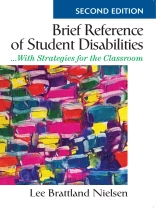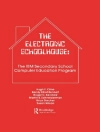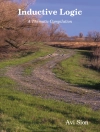‘The format is great! Teachers will love the easy-to-access information, which can serve as a springboard for more in-depth study.’
—Debi Gartland, Professor of Special Education
Towson University
‘The book is organized to help educators easily find information. There are also useful resources to help parents.’
—Nicole Guyon, Special Educator
Westerly School Department, Cranston, RI
The ideal desktop reference for specific disabilities in the inclusive classroom!
This updated, detailed reference provides essential information for educators about common exceptionalities they are likely to encounter in an inclusive classroom. In easy-to-understand language, the book provides guidelines for creating safe learning environments, applying disciplinary measures, and defining parents′ and educators′ roles in developing Individualized Education Programs.
Presented alphabetically, each entry includes a definition of the disability, background information, characteristics, and a list of related readings, organizations, and agencies, with contact information. The author discusses a wide range of concerns, from ADHD, dyslexia, hearing impairment, and emotional disturbances to muscular dystrophy, spina bifida, aphasia, and cerebral palsy, and includes a review of health disorders such as asthma, diabetes, heart disorders, and hemophilia . The new sections in this second edition cover
- A comparison of ADHD and bipolar disorder
- Concise legal explanations and sources, with contact information and Web sites
- The reauthorization of IDEA 2004, NCLB, and postsecondary transition
Brief Reference of Student Disabilities, Second Edition , also provides a compilation of common disability-related acronyms and a list of children′s books dealing with disabilities to foster understanding and awareness.
สารบัญ
A Cautionary Note
Preface
Acknowledgments
About the Author
1. What Educators Need to Know About the Law
What the Law Provides
Discipline and Students With Disabilities
The Collaborative Team
2. How Teachers Can Create a Positive Learning Environment
Creating an Inclusive Environment
Teaching Students About Disabilities
Including Parents
3. Understanding the Parents of Exceptional Children
4. Disabilities and Health Disorders: Strategies for Educators
Aphasia
Asperger Syndrome
Attention Deficit/Hyperactivity Disorder
Auditory Processing Disorder
Autism
Bipolar Disorder
Cerebral Palsy
Down Syndrome
Dyslexia
Emotional Disturbance
Epilepsy
Fetal Alcohol Syndrome
Gifted Students With Learning Disabilties
Head Injury
Hearing Impairment
Learning Disabilities
Mental Retardation
Muscular Dystrophy
Speech Disorders
Spina Bifida
Spinal Cord Injury
Tourette Syndrome
Visual Impairment
Visual Processing Disorder
5. Other Health Conditions
Asthma
Diabetes
Heart Conditions
Hemophilia
A Note About Medications
Behavior Interventions
Resource A: Acronyms
Resource B: Public Agencies Offering Assistance to Individuals With Disabilities and Their Families
State Education Departments
State Vocational Rehabilitation Agencies
Office of the State Coordinator of Vocational Education for Students with Disabilities
State Mental Retardation and Developmental Disabilties Agencies
State Developmental Disabilities Councils
State Mental Health Agencies
Protection and Advocacy Agencies and Client Assistance Programs
Programs for Children With Special Health Care Needs
University Affiliated Programs
Directory of National Information Sources on Disabilities (NIS)
Resource C: Children′s Books About Disabilities
Resource D: Associations to Contact
Resource E: Similarities and Differences: ADHD and Early Onset Bipolar Disorder
Bibliography
References
Index
เกี่ยวกับผู้แต่ง
Lee Brattland Nielsen has taught for more than 25 years at the elementary, secondary, and university levels. While teaching at California Lutheran University, she taught “Mainstreaming the Exceptional Student” to teachers and students who were working toward their teaching credentials.She founded and worked for 2 years as the program director of WTHS, Dade County′s educational broadcasting station in Miami, Florida. During this period, she coordinated all the educational programming. During her teaching experience, she has worked with many children with many types of exceptionalities. As a resource specialist teacher, she taught students with learning disabilities in the Los Angeles Unified School District. She believes in a positive approach to learning, with emphasis on building self-esteem in all students.Nielsen received her bachelor of arts degree from the University of Minnesota. She took postgraduate studies at the University of Florida; California State University, Northridge; University of California, Berkeley; and California Lutheran University. Her California teaching credentials include a Lifetime Standard Credential, a Special Education Learning Handicapped Credential, and a Special Education Resource Specialist Credential. She also has held teaching credentials in Arizona and Florida.












